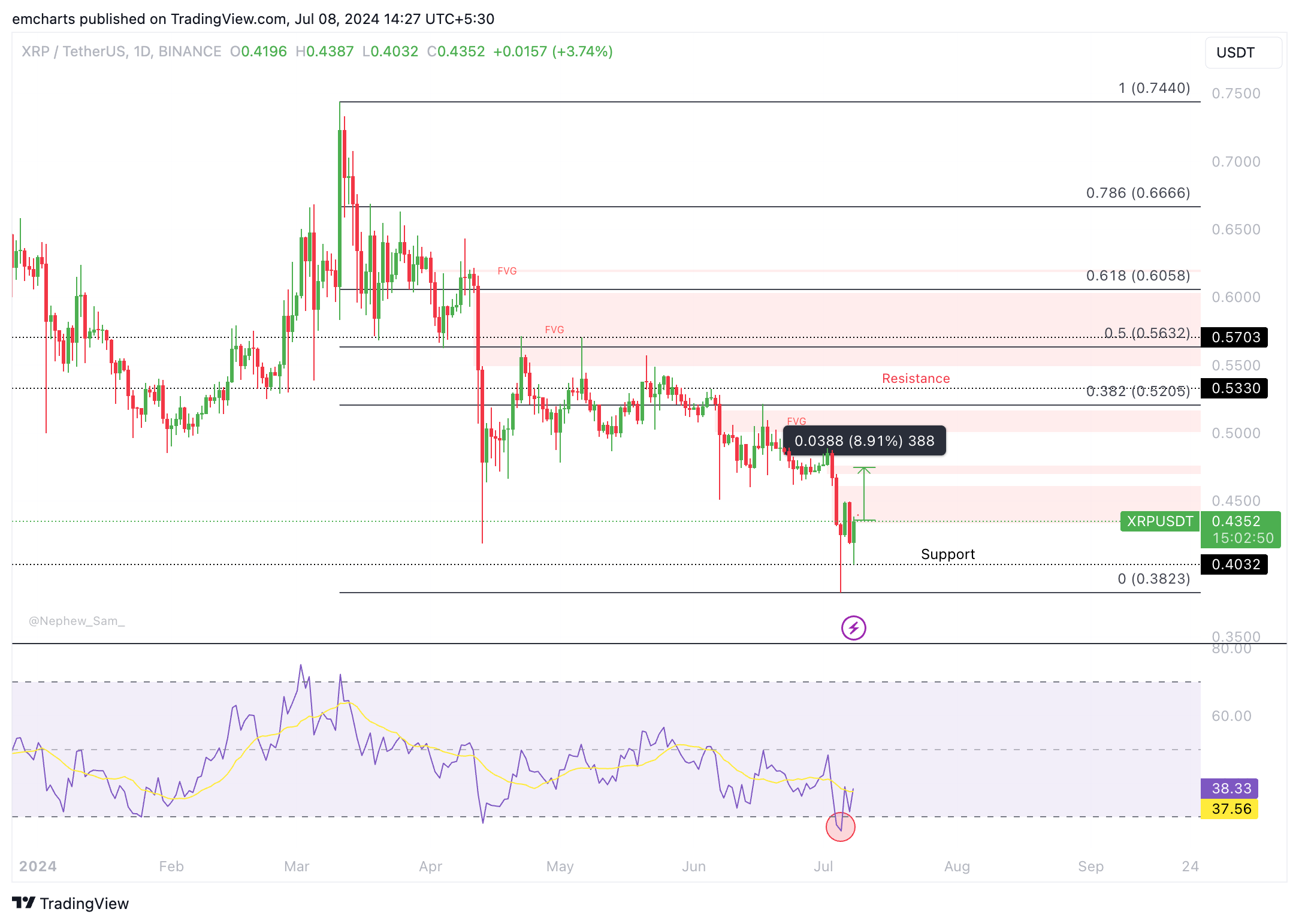Pro Ripple attorney predicts SEC vs. Ripple lawsuit could end on July 31
- Ripple could see the end of the SEC’s lawsuit against the firm as early as July 13, according to Attorney Fred Rispoli.
- Whales distributed their XRP holdings while retail traders accumulated, buying the recent dip in the altcoin.
- XRP is hovering close to $0.42 on Monday.
The Securities and Exchange Commission (SEC) vs. Ripple (XRP) lawsuit could end as early as July 13 or by July 31, according to pro-crypto attorney Fred Rispoli. The lawsuit has been one of the key market movers for the altcoin’s price since 2020. On-chain metrics show whales are distributing their XRP holdings while small wallet investors buy the altcoin.
XRP trades above the $0.42 support on Monday, July 8.
Daily Digest Market Movers: Ripple lawsuit could end soon, according to Attorney Fred Rispoli
- Attorney Fred Rispoli commented on the recent SEC vs. Ripple lawsuit filing, in which the payment remittance firm filed a supplemental authority letter referring to the Binance lawsuit.
- Judge Amy Berman Jackson cited Judge Torres's SEC vs. Ripple ruling on the secondary market sales of cryptocurrencies.
- The SEC responded to Ripple’s letter, and XRP holders are awaiting a ruling on the lawsuit.
- Attorney Rispoli believes that the SEC vs. Ripple lawsuit could end as early as July 13, with Judge Analisa Torres’ ruling.
July 31, although I could see her doing July 13 to be poetic.
— Fred Rispoli (@freddyriz) July 2, 2024
- Alternatively, the ruling could come by July 31.
Just got a notice of a filing in #SECvsRipple and my heart skipped a beat...but don't worry, no ruling just yet. It was @Ripple's notice to Judge Torres of the Binance decision last week.
— Fred Rispoli (@freddyriz) July 2, 2024
- The ruling is expected to address the issue of a settlement/ fine to be imposed on Ripple for its alleged securities law violation and whether XRP is a security or not.
- On-chain metrics show that XRP supply distribution has changed since July 1, with whales shedding their holdings while small investors buy the dip, as seen on Santiment.
 [13.21.52, 08 Jul, 2024]-638560357346309655.png)
XRP supply distribution
- Accumulation by retail investors could help Ripple resist a mass sell-off.
Technical analysis: XRP hovers around $0.42
Ripple has been in a state of decline since March 11, dropping from its local peak of $0.7440 to its July 5 low of $0.3823 in its downward trend. Ripple has since recovered from the decline, up to $0.4352 on Monday.
The Relative Strength Index (RSI) reads 38.33. After briefly dipping into the oversold region under 30, XRP has recovered. XRP could rally toward the Fair Value Gap (FVG) between $0.4697 and $0.4760, as seen in the XRP/USDT daily chart below.

XRP/USDT daily chart
In case of a daily candlestick close below $0.4335, the bullish thesis could be invalidated. XRP could then sweep liquidity at the July 5 low of $0.3823.
Ripple FAQs
Ripple is a payments company that specializes in cross-border remittance. The company does this by leveraging blockchain technology. RippleNet is a network used for payments transfer created by Ripple Labs Inc. and is open to financial institutions worldwide. The company also leverages the XRP token.
XRP is the native token of the decentralized blockchain XRPLedger. The token is used by Ripple Labs to facilitate transactions on the XRPLedger, helping financial institutions transfer value in a borderless manner. XRP therefore facilitates trustless and instant payments on the XRPLedger chain, helping financial firms save on the cost of transacting worldwide.
XRPLedger is based on a distributed ledger technology and the blockchain using XRP to power transactions. The ledger is different from other blockchains as it has a built-in inflammatory protocol that helps fight spam and distributed denial-of-service (DDOS) attacks. The XRPL is maintained by a peer-to-peer network known as the global XRP Ledger community.
XRP uses the interledger standard. This is a blockchain protocol that aids payments across different networks. For instance, XRP’s blockchain can connect the ledgers of two or more banks. This effectively removes intermediaries and the need for centralization in the system. XRP acts as the native token of the XRPLedger blockchain engineered by Jed McCaleb, Arthur Britto and David Schwartz.

